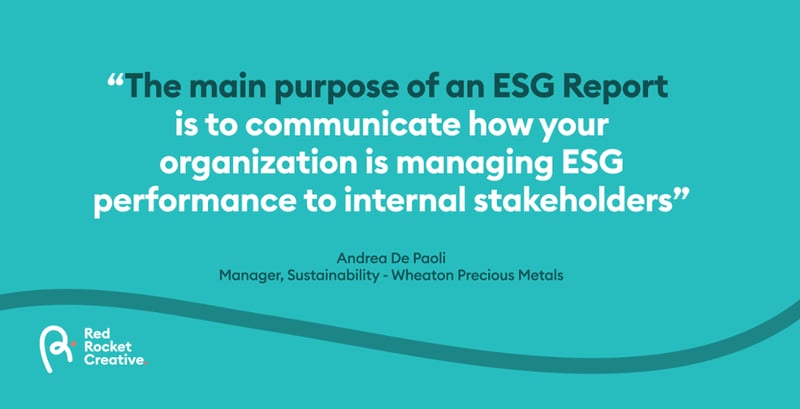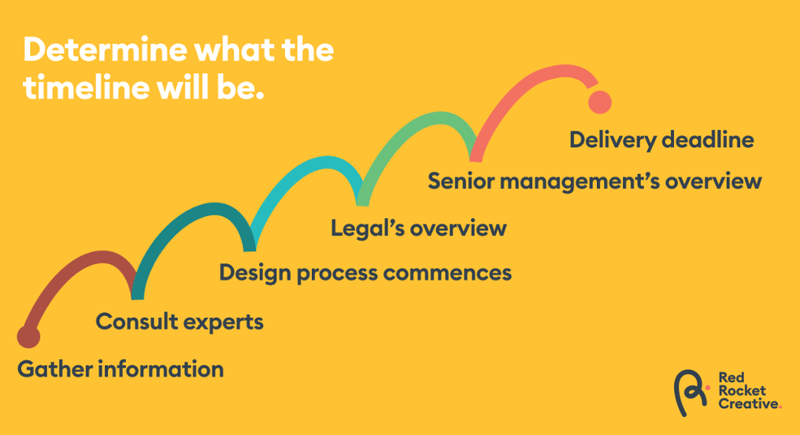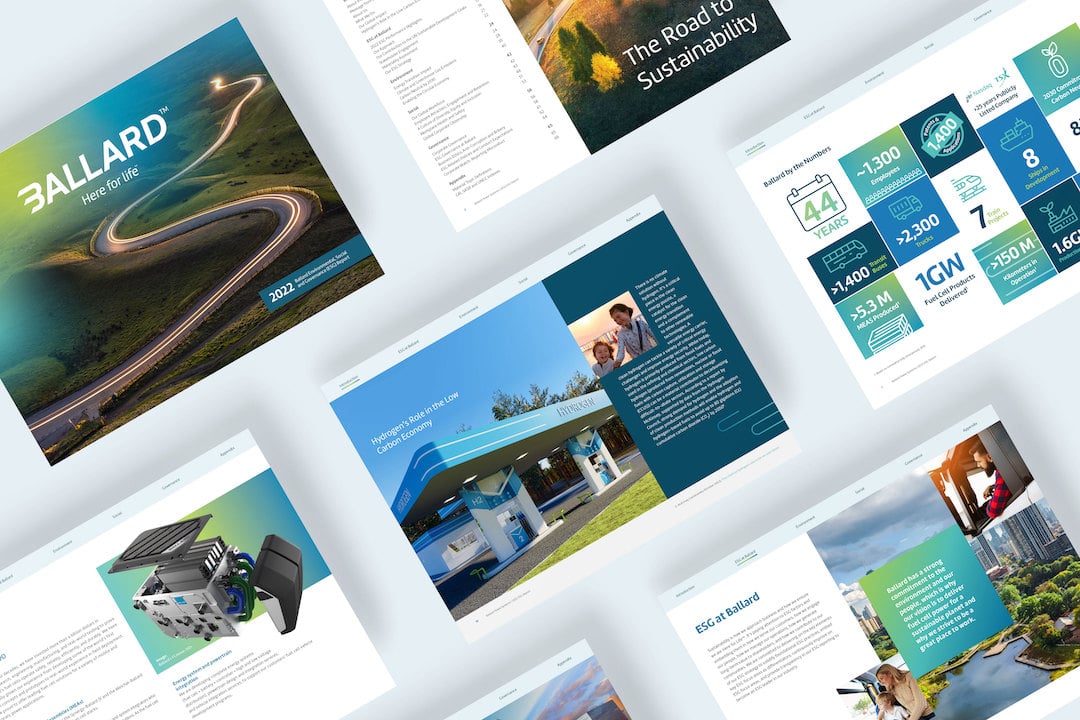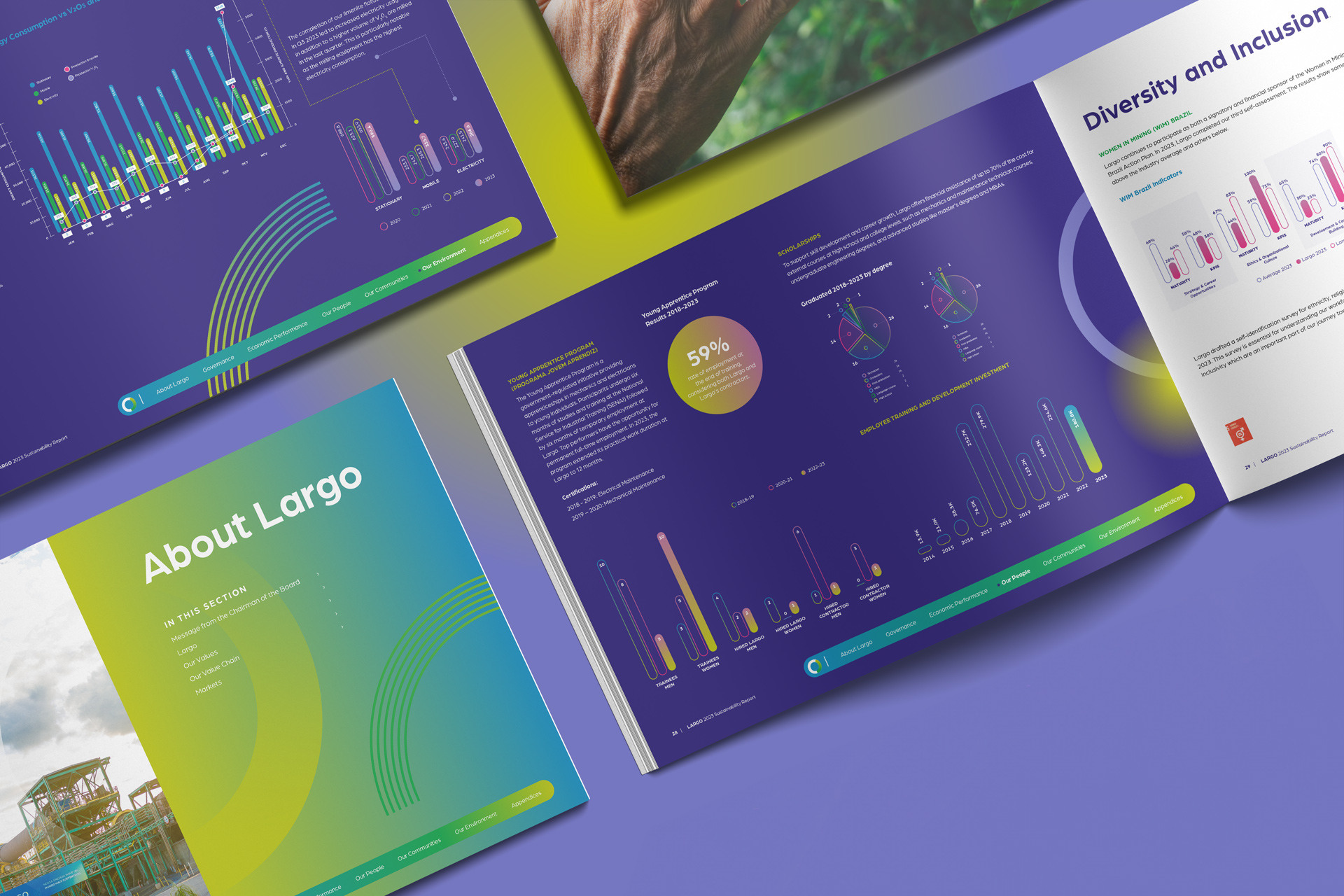As a design agency that has partnered with dozens of organizations on their ESG reporting journey, we understand the complexities and challenges that come with creating a compelling sustainability report. Whether you're publishing your first report or looking to elevate your existing ESG communications, having the right partner to guide you through the process can make all the difference.
Our experience working with companies across various sectors has taught us that successful ESG reporting isn't just about presenting data—it's about telling your sustainability story in a way that resonates with stakeholders while maintaining the highest standards of transparency and accuracy. It's about transforming complex information into clear, engaging communications that reflect your company's commitment to sustainable practices.
Why produce an outstanding sustainability or ESG report? It's simply good business. Sustainability issues are business issues, and how you communicate them can significantly impact your organization's reputation, stakeholder relationships, and bottom line.
In this blog, we will provide you with seven steps to plan out your ESG report effectively:
-
Review or develop an ESG baseline
-
Establish the report timeline
-
Create content structure and gather relevant information
-
Verify data through globally recognized reporting protocols
-
Develop the look and feel of your report
-
Establish a distribution strategy

There is a notable difference between a well-organized, effective ESG report and a poorly planned, disjointed one. Planning eliminates fluff and ensures your ESG report is as comprehensive as possible. To ensure success, you need to schedule time for contribution deadlines, data validation and legal oversight. We know that each company and organization has different requirements for their ESG report, but having a well-defined process will guide your team to get the report completed on time, with input/approvals from the many contributors and look fabulous in the process.
1. Review or Develop an ESG Baseline
An effective ESG report strategy should be tied to business strategy, sustainability initiatives and efforts that reflect your organization’s overall business goals. Remember, effective ESG reporting is transparent and thoughtful.

The purpose of such a report is to inform the public and your stakeholders about your environmental, social and governance-related performance. Not only do you need to be seen as doing the right thing, but your sustainability efforts must also align with your business strategy. The two words that should be your mantra are specific and transparent.
Sure, we want to be seen as the white knight of good business practices and make motherhood statements about how we are performing. But don’t forget the details of your report are examined by many eyes—your competition, regulators, and communities where you operate. As a result, you need to be specific and transparent. Honest, clear communication in a report builds investor loyalty. It can also provide insights into your long-term strategy and help people see your vision for the future.
Review your business's existing ESG strategy- if you created a report last year, go back and see how your strategy has changed. Review positives and negatives from last year’s report and update goals for the year ahead.

2. Establish Report Timeline
A timeline ensures all contributors are aware of what and when they’ll need to prepare material for the report. Determining your timeline is essential at the beginning of your reporting process in order to ensure all deadlines are established, communicated, followed up on, and adhered to. These are complex projects, and you need time to pull all the details together. We suggest creating your timeline based on a minimum six-month window to factor in key deadlines.
Here is an example of an effective five-month timeline:
- Month 1: Gathering information. This is your time to gather all the information needed to begin the reporting process and ensure key details are in place.
- Month 2: Consulting experts. Once you have the information needed, it is important to consult with subject matter experts. These experts will be able to guide you through the reporting process and spot any discrepancies early on.
- Month 3: Design process commences. Now, it is time to begin your collaboration process with an agency.
- Month 4: Legal’s overview. Once you have received your first draft back from the agency, it is time to have your legal team review the document. Once cleared, it is good to show it to senior management.
- Month 5: Senior management’s review. Senior management should have the final signoff to ensure your report is accurate.
Top tip: have senior management physically sign a printed draft of the report. You’d be surprised how much more people pay attention when they have to sign for its approval. One of the biggest factors in a report timeline is the review and related approval process, so ensure you give enough time for each contributor to do their work. Recognize that, for most contributors, this is not their main job, and they need to “fit” it into their already full workload. Proper time, notice, and follow-up will help everyone remain on task.
Examples of key contributors include:
- Subject matter experts: Verifying your content is essential when creating a strong sustainability report. Examples of subject matter experts include ESG analysts, environmental specialists, technical teams and legal advisors.
- Legal Team: Being in compliance with reporting requirements creates opportunities for strong review and assurance in the correct legal communications.
- Executive Management: Ensure that executive management is aware of the timeline, as the board will usually have a review committee dedicated to providing oversight to the report.
As you can see, people from all sides of the business will be verifying information within this report.
3. Create Content Structure and Information Assembly
A strong structure is essential for the success of your ESG report. Creating an excellent content structure is the first step to telling an effective story of your ESG efforts expressed through your data.
Global Reporting Initiative (GRI) or Sustainability Accounting Standards Board (SASB) standards define ESG-related information that needs to be assembled across different departments and operational sites, as this will facilitate your data collection and information analysis process.
Referring to the GRI or SASB framework will greatly assist in creating reporting structures. What we have been seeing is a blended approach to reporting whereby the “best of GRI” and the “best of SASB” are being used in a company’s report. What you do this year can always be adjusted for next year as your reporting structure matures and information becomes more comprehensive. It’s the natural process of reporting, so don’t fret if you don’t get it all right the first time. Acknowledge the reporting shortfalls with a note stating that next year it’ll be better. Assemble the information, be transparent and authentic, move forward, critique the work and make it better next time.
Knowing the data that is required to be included in your ESG report is essential. KPIs for all material topics, a policy for each, and mapping out the process will help facilitate the development of a healthy report.
Looking at the bigger picture, it’s clear that standards matter because improved transparency leads to improved performance. When companies use these internationally recognized standards to disclose consistent and reliable sustainability data, investors are able to compare companies and then direct capital/investments to the top performers.
Plus, using such standards (GRI or SASB), companies are able to benchmark their performance against peers and work to improve their performance, to increase shareholder value, creating a race to the top and ultimately making the capital markets a powerful lever of change for a more sustainable world.
4. Verify Your Data
Transparency plays a crucial role in ESG reporting, along with the quality and validity of your data. Thus, aim to develop consistent and controlled policies that will permit you to quantify your metrics. Also, make your metrics SMART (Specific-Measurable-Achievable-Realistic-Time Bound) so you can easily demonstrate your progress and achievements over time.
Organizations can choose to verify their data through various trusted sources. Organizations such as GRI and SASB provide verification on sustainability reporting standards that greatly assist in communicating impact.
Top tip: Make sure all key contributors, including corporate disclosure committees, sign off on the final copy before printing or publishing it online. Approvals are essential.

5. Developing the Look of Your Report
Once all of your data has been verified by the correct reporting standards, approved by internal stakeholders, and assembled, it is time for the design process and to develop the look and feel of your report. Your report should visually represent your company in an accurate manner and reflect your brand identity.
Choosing the right agency can make a tremendous difference in the final product. Learn more about choosing the right agency.

6. Creating a Distribution Strategy
Answering the question, “How are we going to share this report with the community?” is another essential question that needs to be asked as it will affect the design and production of the report. Will it be a PDF that lives within the sustainability section of your website? Will it be a dedicated micro-site embedded within the larger corporate site? Do you need to print copies to distribute to stakeholders? Will you promote the publishing of the document via social? If yes, what assets need to be created for each channel?
If it is time to choose a printing partner, ESG design agencies often have quality recommendations that they regularly work with. Consider asking your agency partner for distribution and printer recommendations at the beginning of the ESG reporting process.
Effectively Plan Your ESG Report for an Integral Piece of Corporate Communications
Like anything in life, the better the planning, the better the outcome. As such, we believe It is extremely important to plan ahead when producing an ESG report and ensure that it’s effectively structured to communicate your organization’s initiatives in a comprehensive, transparent and effective manner. Follow the tips provided above for best practices in creating an effective and compelling ESG report.
Is your organization considering creating an ESG report? Contact us to learn more about our corporate communication services.
Perry Boeker
Principal & Marketing Strategist A results-driven creative thinker, Perry is a marketing management professional with a proven record of achievement in Strategic Planning, Team Leadership, and New Concepts Development.



